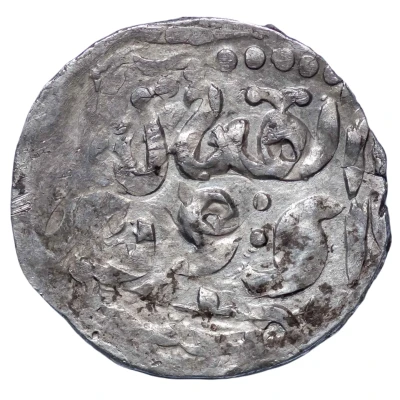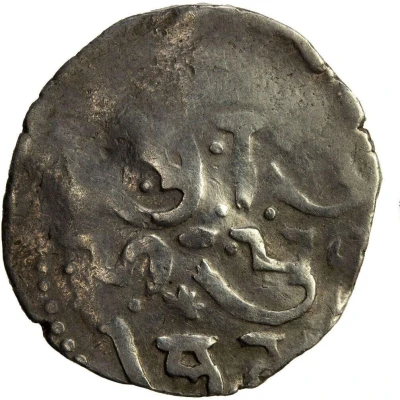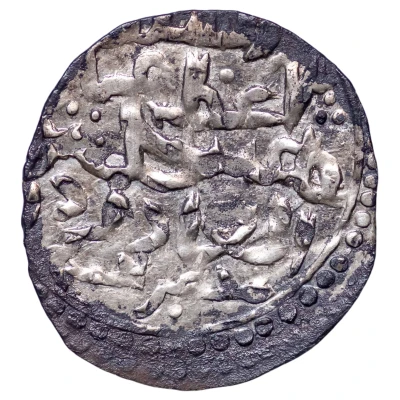


© Grinya (CC BY-NC-SA)
Double dirham - temp. Toqta "Pointed quatrefoil // plain circle" Ukek
700 (1291-1312) years| Silver | 1.85 g | - |
| Issuer | Golden Horde |
|---|---|
| Khan | Toqta (1291-1312) |
| Type | Standard circulation coin |
| Year | 700 (1291-1312) |
| Calendar | Islamic (Hijri) |
| Value | 2 Dirhams (1.4) |
| Currency | Dinar (1227-1502) |
| Composition | Silver |
| Weight | 1.85 g |
| Shape | Round (irregular) |
| Technique | Hammered |
| Orientation | Variable alignment ↺ |
| Demonetized | Yes |
| Updated | 2024-10-06 |
| Numista | N#423028 |
|---|---|
| Rarity index | 97% |
Reverse
Inscription in plain circle
Script: Arabic
Lettering: al-‘izz al-dā’im wa al-sharaf alqā’im
Translation:
Power to Allah
the One and Almighty
Comment

Tokhta (Toqta, Tokhtai, Tochtu or Tokhtogha) (1270—1312/13) was a khan of the Golden Horde, son of Mengu-Timur and great grandson of Batu Khan. He was a khan of the Golden Horde in 1291—1312. His name "Tokhtokh" means "hold/holding" in the Mongolian language.
Interesting fact
One interesting fact about the Double Dirham coin from the Golden Horde is that it features a unique design element known as a "pointed quatrefoil" on one side, which is a four-lobed shape with pointed tips. This design element is surrounded by a plain circle on the other side, creating a striking contrast between the two sides of the coin. This distinctive design feature sets the Double Dirham coin apart from other coins of its time and makes it a fascinating piece of numismatic history.



